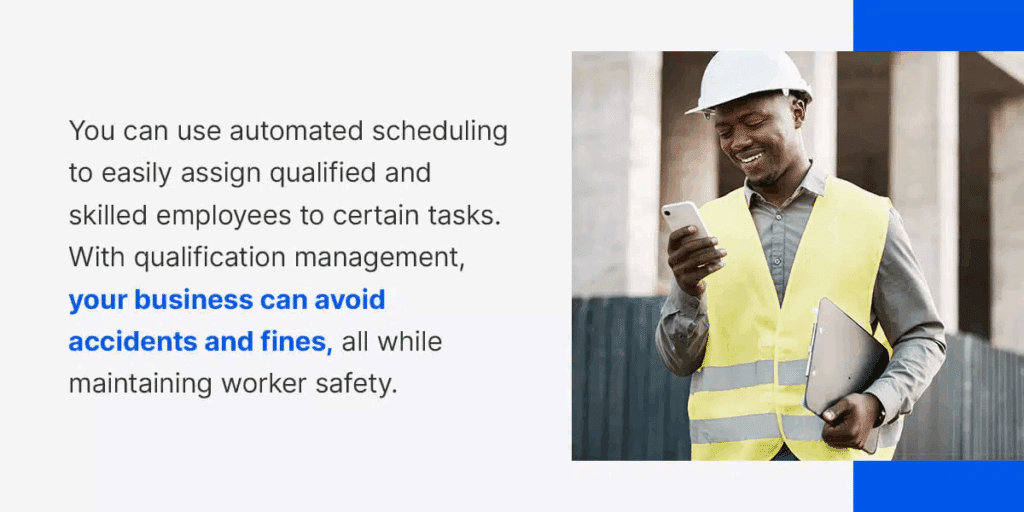For oil rig workers, the job is demanding, the stakes are high, and the environment is anything but ordinary. Offshore operations require long hours, specialized skills, and unwavering attention to safety protocols. With complex shift rotations and limited access to on-site personnel managers, effectively managing labor can be a logistical nightmare. But poor scheduling isn’t just an inconvenience—it’s a safety risk.
At Indeavor, we understand the critical relationship between workforce planning and safety. Improving scheduling practices not only supports operational efficiency but also protects the wellbeing of your offshore oil rig workers.
Understanding the Scheduling Challenges on Offshore Oil Rigs
Oil rig workers often follow rotational shifts like 14/14 or 21/21, requiring extended time offshore followed by equally long breaks at home. Managing these shifts across multiple crews—while ensuring each position is staffed with a qualified, rested employee—poses a unique challenge.
Add to that the increasing difficulty of recruiting and retaining skilled labor, and the need to maintain compliance with labor laws and fatigue management regulations, and you have a recipe for complexity. When someone calls off unexpectedly or a certification expires mid-rotation, supervisors often scramble to find replacements, often without the tools or visibility to make the best decision. Manual scheduling methods, such as spreadsheets or static calendars, introduce risk due to their limited capacity for updates, lack of real-time insights, and vulnerability to human error.
The impact of these inefficiencies is not just felt on the administrative side. It directly affects the safety and well-being of offshore oil rig workers, who rely on precise coordination and adequate staffing to perform their duties in an already hazardous environment.
How Poor Scheduling Increases Safety Risks
Without proper scheduling controls, offshore oil rig workers are vulnerable to fatigue-related incidents and human error. Overworked employees are more likely to make mistakes—especially in high-risk environments where even minor oversights can lead to major safety hazards.
Additionally, if an unqualified or uncertified worker is scheduled due to outdated spreadsheets or limited visibility into training status, the consequences can be catastrophic. Emergency preparedness also suffers when teams are operating with less-than-optimal staffing or unclear communication pathways.
Fatigue management is another critical factor. Without enforced rest periods and regulated shift rotations, workers are more prone to exhaustion. Fatigue doesn’t just reduce performance; it increases the likelihood of accidents, delays, and costly disruptions. A well-structured scheduling process is not just about filling shifts—it’s a front-line defense against unnecessary risk.
For organizations committed to worker safety, the time to modernize scheduling practices is now.

Leveraging Digital Scheduling Solutions for Offshore Operations
Modern workforce management technology is transforming the way oil rig workers are scheduled and supported. With digital scheduling tools, offshore operators can move beyond the limitations of manual processes to gain greater control, flexibility, and insight into workforce operations.
Centralized platforms offer full visibility into the availability, certifications, and qualifications of every worker, enabling supervisors to make informed decisions quickly. If a last-minute call-off occurs, they can instantly identify suitable replacements who meet compliance and fatigue management requirements. This kind of agility is critical when operations are taking place miles offshore with limited personnel.
Digital Scheduling Solution Capabilities
Digital systems also make it possible to build shift patterns that respect both legal requirements and worker wellbeing. Automated rules prevent noncompliant schedules from being created in the first place, reducing the risk of violations and protecting employees from unsafe workloads. Built-in alerts can notify managers when a worker’s certification is about to expire, helping avoid the dangerous mistake of assigning someone to a role they are no longer qualified to perform.
Here are some key capabilities of modern digital employee scheduling platforms:
- Real-time visibility into crew availability, training, and location
- Automated enforcement of fatigue policies and certification requirements
- Rule-based scheduling to prevent noncompliant shift assignments
- Mobile accessibility for offshore supervisors and crews
Communication is another area where digital scheduling brings dramatic improvement. Offshore supervisors and oil rig workers alike benefit from having access to real-time schedules through mobile applications. Changes to shifts, assignments, or rotation dates can be communicated instantly, reducing confusion and improving accountability. Workers are empowered to request time off, swap shifts, or confirm schedules without relying on outdated call chains or faxed paper rosters.
Even in environments with intermittent connectivity, modern scheduling platforms can function offline and sync data when a connection is restored—ensuring that critical information never falls through the cracks. This level of redundancy and reliability is essential when dealing with the unpredictable realities of offshore work.
Digital scheduling isn’t just an operational upgrade—it’s a strategic investment in safety, compliance, and the long-term sustainability of your workforce.

How Indeavor Supports Offshore Oil Rig Workers
Managing a workforce on an offshore oil rig presents one of the most complex scheduling challenges in the energy sector. Limited crew rotations, long shifts, certification requirements, and safety-critical responsibilities all demand a scheduling system that goes far beyond spreadsheets or basic planning tools. Indeavor meets these demands with a cloud-based workforce management solution designed specifically for high-risk, 24/7 environments like offshore oil platforms.
Indeavor provides operators with real-time access to scheduling data that’s tailored to the regulatory and logistical nuances of offshore labor. The system dynamically assigns shifts based on each worker’s certifications, skillsets, fatigue thresholds, and availability—ensuring only properly qualified personnel are scheduled for high-stakes roles. If an employee is suddenly unavailable or a shift must be filled immediately, Indeavor’s rules-based engine suggests only eligible, compliant workers, cutting decision time and eliminating manual errors.
Key Benefits of Indeavor for Offshore Oil Rig Operations
- Dynamic, Compliance-Driven Scheduling: Automatically assigns only qualified and compliant workers based on job requirements, certification status, and fatigue policies—minimizing the risk of safety incidents and regulatory violations.
- Real-Time Labor Insights for Supervisors: Provides offshore managers with a real-time dashboard of worker availability, certification status, absenteeism, and skill gaps—supporting faster, more informed decision-making in isolated environments.
- Fatigue Risk Management: Enforces fatigue mitigation rules automatically, accounting for hours worked, rest periods, and shift rotation limits—reducing the risk of accidents due to worker exhaustion.
- Worker Empowerment via Mobile Access: Gives oil rig workers the ability to view schedules, initiate swaps, and request leave from their mobile device, even when offshore, with offline syncing capabilities for limited-connectivity zones.
- Role-Based Competency Enforcement: Prevents assignments to safety-sensitive tasks unless the worker meets all pre-defined skill, license, and training thresholds—eliminating manual credential checks and ensuring audit compliance.
- Full Compliance & Audit Trail: Maintains secure, timestamped logs of all scheduling decisions, changes, and approvals to support internal reviews and external audits from OSHA, MMS, or other regulatory bodies.
Indeavor doesn’t just manage schedules—it enforces standards. Whether it’s HSE compliance, training currency, fatigue mitigation, or union requirements, the platform automates policy enforcement and provides audit-ready logs to ensure nothing falls through the cracks. The result is a safer, more stable offshore workforce and a more resilient operation overall.
Conclusion
Safety starts with scheduling. When you equip your operations with digital tools designed for the complexities of offshore work, you empower your teams to perform at their best—without compromising safety or compliance.
Oil rig workers deserve a scheduling system that respects their time, protects their wellbeing, and ensures only the right people are in the right place at the right time. A modern workforce management solution like Indeavor delivers just that, giving you the ability to manage labor efficiently while upholding the highest safety standards.
Ready to improve how you manage your offshore oil rig? Schedule a demo to see how Indeavor can help streamline labor planning, reduce risk, and support your workforce, onshore and off.
About the Author
Claire Pieper is the Digital Marketing Specialist for Indeavor. In her role, she specializes in crafting strategic and engaging content, ensuring that customers are well-informed. Claire is dedicated to enhancing the customer experience and optimizing the user journey through Indeavor’s solutions. To learn more or get in touch, connect with Claire on LinkedIn.



